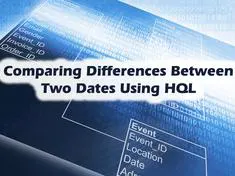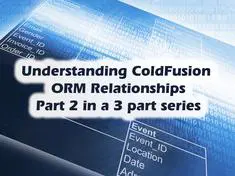ColdFusion ORM related posts

Calculating Differences Between Two Dates with HQL
I will walk you through how to use the DateDiff function in SQL Server to calculate differences in dates as well as how to achieve the same results using Hibernate.

Common Hibenate/ColdFusion ORM Errors
This is a comprehensive list of the ColdFusion ORM errors that I have encountered while working with ColdFusion ORM in the last several years.

Using ColdFusion ORM to Populate the Database
We will discuss how to use ColdFusion ORM to populate records into the database.

Understanding ColdFusion ORM Relationships
We will discuss how to configure ColdFusion ORM, using ColdFusion persistent CFC's to create the tables and relationships, and have an in-depth discussion about the types of relationships used in ColdFusion ORM.

Introducing ColdFusion ORM
I will show you how to create new tables and populate the records using ColdFusion ORM, and discuss solutions that were used to overcome some common pitfalls.

ColdFusion ORM Error - java.lang.Integer, etc.
Solving a cryptic ColdFusion ORM Error - java.lang.Integer, etc.

ColdFusion Orm, a fantastic book by John Whish
If you're using ORM and ColdFusion, I found John Whish's ColdFusion Orm book to be an invaluable resource.
